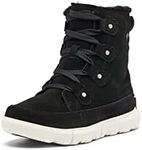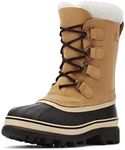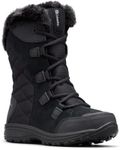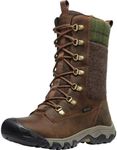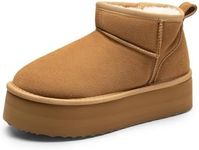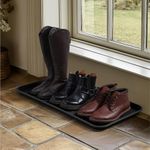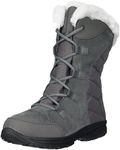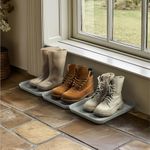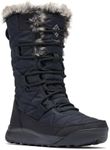Buying Guide for the Best Womens Snow Boots
When choosing women's snow boots, it's important to consider factors that will keep your feet warm, dry, and comfortable in snowy and icy conditions. The right pair of snow boots should provide adequate insulation, be waterproof, and offer good traction to prevent slipping. Additionally, consider the style and fit to ensure they match your personal preferences and needs. Understanding the key specifications will help you make an informed decision and find the best pair of snow boots for your winter adventures.InsulationInsulation in snow boots is crucial for keeping your feet warm in cold weather. It is typically made from materials like Thinsulate or wool, which trap heat and provide warmth. Insulation is measured in grams, with higher numbers indicating more warmth. For mild winter conditions, 200-400 grams of insulation may suffice, while for extremely cold temperatures, you might need 600 grams or more. Consider your typical winter environment and how cold it gets when choosing the right level of insulation for your needs.
WaterproofingWaterproofing is essential in snow boots to keep your feet dry in wet and snowy conditions. This feature prevents water from seeping into the boots, which can lead to discomfort and cold feet. Look for boots with waterproof membranes or treatments, such as Gore-Tex or rubber shells. If you frequently encounter deep snow or slushy conditions, prioritize boots with high waterproofing capabilities. For less severe conditions, water-resistant materials may be sufficient.
TractionTraction refers to the grip that the soles of the boots provide on slippery surfaces. Good traction is important to prevent slips and falls on ice and snow. Snow boots often have rubber outsoles with deep lugs or treads designed to enhance grip. If you plan to walk on icy or uneven terrain, look for boots with aggressive tread patterns. For urban environments with less challenging surfaces, moderate traction may be adequate.
HeightThe height of snow boots can affect both warmth and protection. Taller boots offer more coverage and can keep snow from entering the top, which is beneficial in deep snow. However, they may be heavier and less flexible. Shorter boots are lighter and more comfortable for walking but may not provide as much protection in deep snow. Consider the typical snow depth and your activity level when choosing the height of your boots.
Fit and ComfortFit and comfort are crucial for ensuring that your snow boots are wearable for extended periods. A good fit should allow for some wiggle room for your toes and accommodate thick socks if needed. Boots that are too tight can restrict circulation and lead to cold feet, while those that are too loose may cause blisters. Try on boots with the socks you plan to wear and walk around to ensure they are comfortable. Consider features like cushioned insoles and adjustable laces or straps for a personalized fit.
StyleWhile functionality is key, the style of snow boots can also be important for personal preference and confidence. Snow boots come in various designs, from sporty to more fashion-forward options. Consider what style suits your wardrobe and lifestyle. If you plan to wear them in both outdoor and casual settings, look for versatile designs that can transition between different environments.
